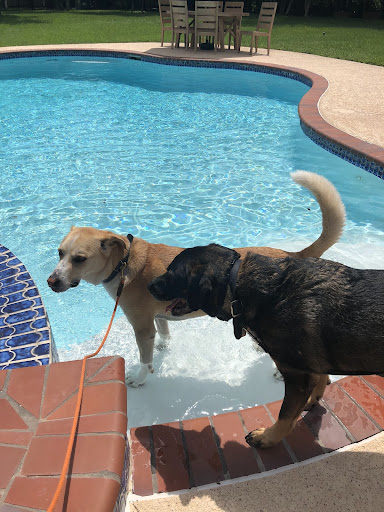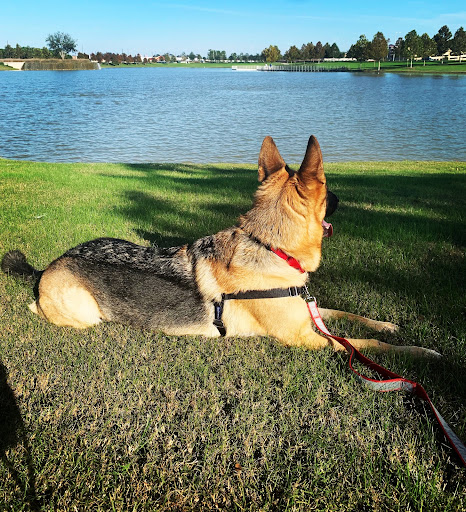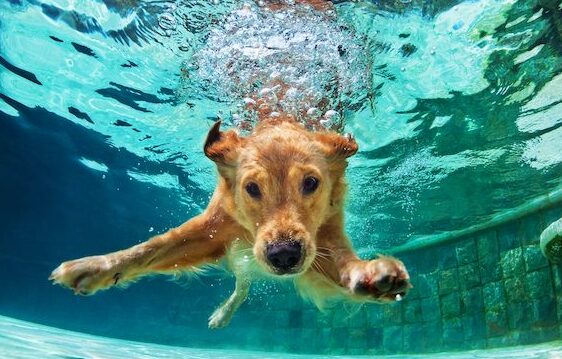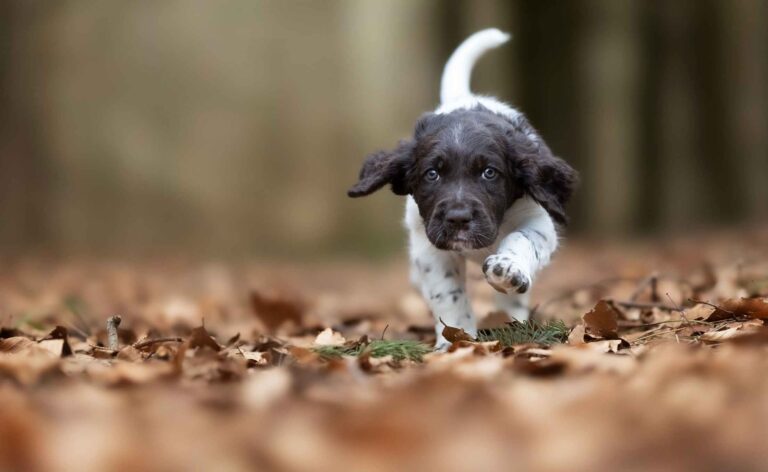From poolside grill outs, weekends at the family lake house, or day trips to the beach, summer tends to naturally be filled with all kinds of waterside adventures. If you plan on bringing your dog with you anywhere that a body of water will be present, we’ve put together this starting guide to dog water safety just for you.

Pool Safety
- Do not leave your dog unsupervised around pools
- Consider fencing your pool for additional peace of mind
- Make sure the pool cover is off when they are around. Pool covers can be deceiving to dogs and they may think it’s a hard surface, try to walk on it, and get trapped in the cover sinking underwater
- Teach your dog to swim before allowing them free access to any pool. If you aren’t sure where to start, some dog trainers who work one on one offer training services by or even in the pool. We are one of them!
- Train and use relative obedience that will assist in pool safety such as wait and come and a release word such as “free”. Pictured below is an example of one of our trainers working on “come” out of the shallow end of a pool.
- Utilize pool safety products such as pool alarms, life vests, and pet pool ladders
- Make sure your dog has plenty of fresh water outside so they don’t try to drink from the chlorinated pool water
- Keep pool chemicals and cleaners stored away and out of reach and sight
Beach and Lake Safety
- Be sure your dog is supervised at all times. We recommend having them on leash in any public environment unless they have an extremely reliable recall command, it is off leash friendly, and your dog is familiar with water for additional safety.
- If you are going to have them in the water, we recommend keeping them in a shallow area where you can constantly observe and step in if needed. If you are not physically capable of assisting your dog if anything were to occur, we recommend having them enjoy the water from a distance, or walk them in the shallow areas on leash.
- Always check the water conditions and temperature the day of. Fast moving currents and undertows can be extremely dangerous and unpredictable. Checking the temperature of the water is important too, as low water temperatures can lead to hypothermia and other concerns. A great rule of thumb is if it’s too cold or risky for you, it is for them too!
- Consider investing in a life jacket for your dog

Additional Health and Safety Tips Around Water
- After you are done with your adventures, whether pool, lake, or beach, rinse your dog off with a hose or outdoor shower to remove any potential chlorine, bacteria or unwanted “friends” from joining you in the car ride back. This will help avoid skin irritation. The moisture collected in your dog’s ears can cause ear infections, so be sure to clean out and dry their ears thoroughly as well.
- Consider jumping on an opportunity to learn Pet CPR in the event of an emergency. American Red Cross CPR Certification
- Although many breeds of dogs are bred specifically to love the water such as the labrador retriever or the otterhound, there are other breeds which you will want to be more cautious with. Brachycephalic breeds, or breeds of dog with flat faces like bulldogs, shih-tzu’s, pugs, or any short snouted dog for that matter, are some that you may want to reconsider their time spent in the water. These breeds don’t tolerate the heat well, and they tend to have larger chests with flat faces, which leads them to become tired more quickly. For swimming, that poses an increased safety risk of sinking underwater.
After reading this starting dog water safety guide, we know you can confidently and safely enjoy your next water adventure this summer. Happy swimming!




